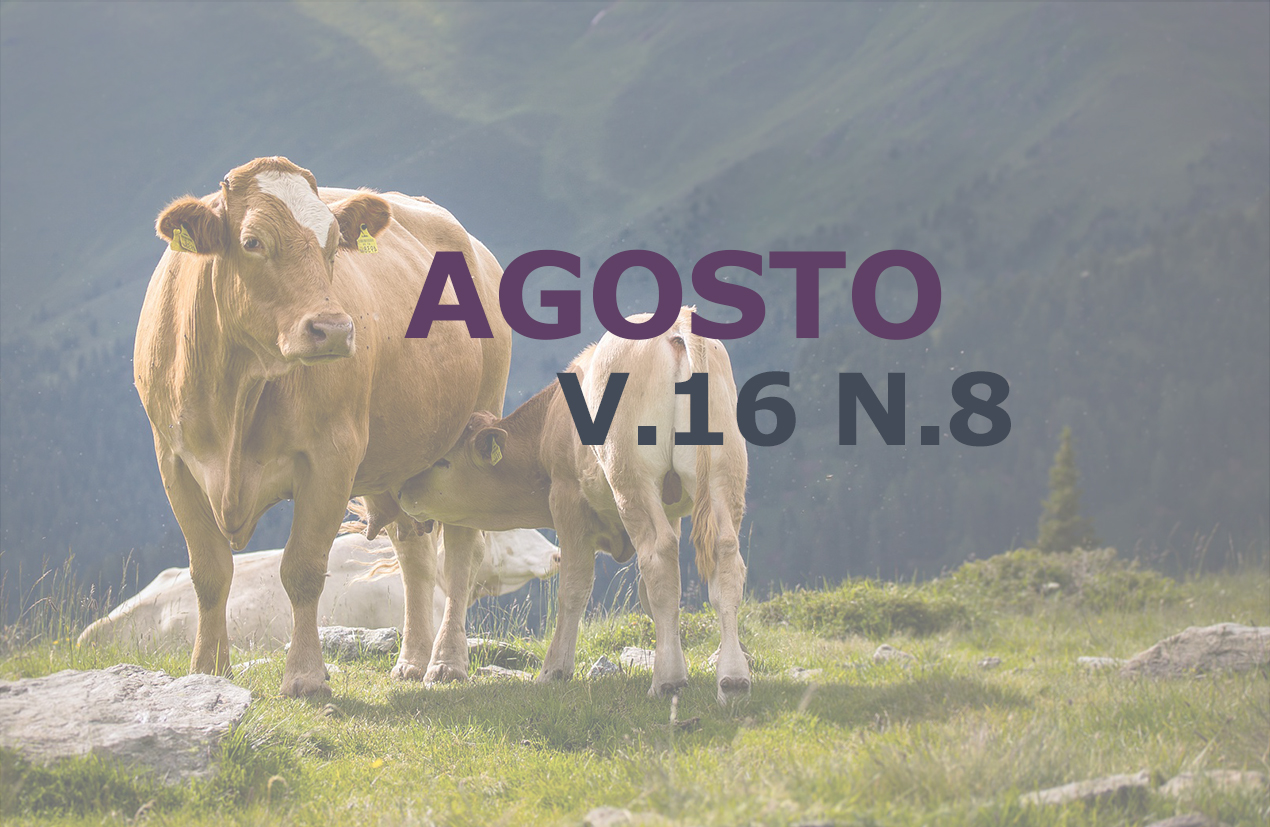Cattle dehorning in field: ethics and well being
DOI:
https://doi.org/10.31533/pubvet.v16n08a1186.1-9Keywords:
Cattle, pain evaluation, dehorning, rescuesAbstract
The objective of this study was to evaluate the analgesic and cardiorespiratory effects of administering xylazine or saline intramuscularly, associated with circular locoregional block at the base of the horn, in cattle submitted to the dehorning procedure using the thermal method. 32 cattle were used, with an average weight of 116 ± 58,1 kg, and with an average age of 2 ± 1,1 months, randomly allocated into two groups. The CG (n: 16) received saline solution in the MPA, and 20 minutes later, lidocaine s/v 1 mg kg-1 was administered in the locoregional block; GX (n:16) differed only from GC in MPA, which was performed with xylazine at a dose of 0.05 mg kg-1 intramuscularly. The moments of evaluation were: baseline (M0); 20 minutes after administration of treatments (M1); 5 minutes after locoregional block (M2); at the end of the procedure on the right horn (M3) and at the end of the procedure on the left horn (M4), assessing the respective moments: heart rate, respiratory rate and body temperature. The degree of sedation in the preoperative period (M0) and the pain stimulus in the postoperative period were also evaluated, between M0 to M5 corresponding to postoperative hours. In the HR analysis, there was a decrease of 26.32%, 34.74%, 28.43% and 25.27% from M1 to M4 in relation to M0 in GX. In CG, HR was lower only in M2 (20.58%), when compared to M0. Among groups, HR was lower in GX compared to CG in 21.34%, 23.45%, 24.44% and 30.39% from M1 to M4. The f was lower in GX in M1 (30.30%), M2 (33.33%) and M4 (24.24%) in relation to M0. Between groups a f differed from M1 to M4, decreasing respectively 39.47%, 24.13%, 20.58% and 30.55% in GX compared to CG. In the analysis of the pain assessment scale, differences were found only in GX in M1 in relation to M0 for the activity sub-item. Regarding the time to analgesic rescue, it was evidenced that GX 3, 1 and 1 animal needed rescue in the first, second and third hour after surgery, while in CG 2, 1 and 1 animal they needed rescue at the same times described for GX, with no statistical difference for analgesic rescue in the postoperative period between groups. Than is concluded that, even without statistical difference in analgesic rescues, the prior administration of xylazine to perform dehorning in cattle is extremely important, which facilitates handling, and reduces the stress of restraint in which the animals shake in an expressive way, which can cause injuries both to them and to those who are handling them.
Downloads
Published
Issue
Section
License
Copyright (c) 2022 Gilberto Serighelli Júnior, Felipe Comassetto, Pedro Coradassi, Lorenzo Cavagnari, Marcelos de Oliveira Filho, Guilherme Olivo Manfioletti, Gabriela Borges Conterno, Samuel Jorge Ronchi, Nilson Oleskovicz

This work is licensed under a Creative Commons Attribution 4.0 International License.
Você tem o direito de:
Compartilhar — copiar e redistribuir o material em qualquer suporte ou formato
Adaptar — remixar, transformar, e criar a partir do material para qualquer fim, mesmo que comercial.
O licenciante não pode revogar estes direitos desde que você respeite os termos da licença. De acordo com os termos seguintes:
Atribuição
— Você deve dar o crédito apropriado, prover um link para a licença e indicar se mudanças foram feitas. Você deve fazê-lo em qualquer circunstância razoável, mas de nenhuma maneira que sugira que o licenciante apoia você ou o seu uso. Sem restrições adicionais
— Você não pode aplicar termos jurídicos ou medidas de caráter tecnológico que restrinjam legalmente outros de fazerem algo que a licença permita.





